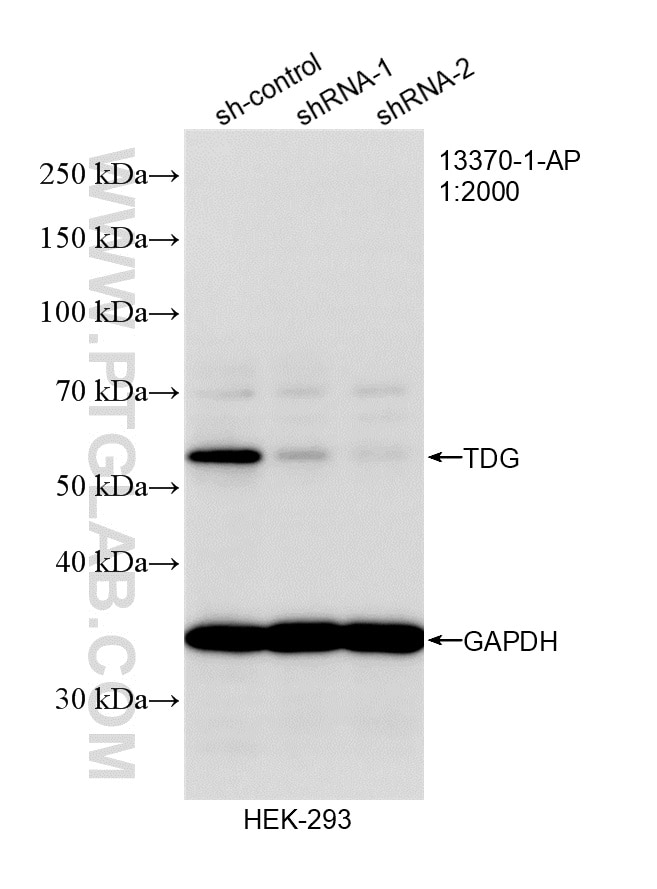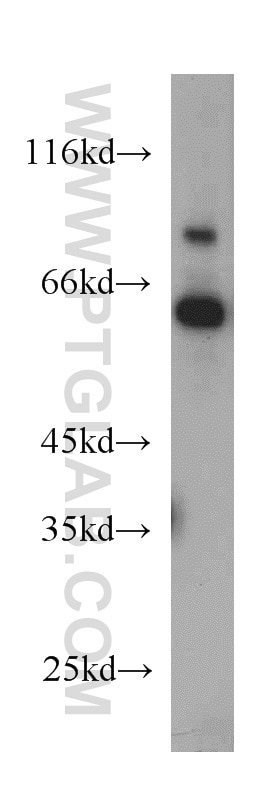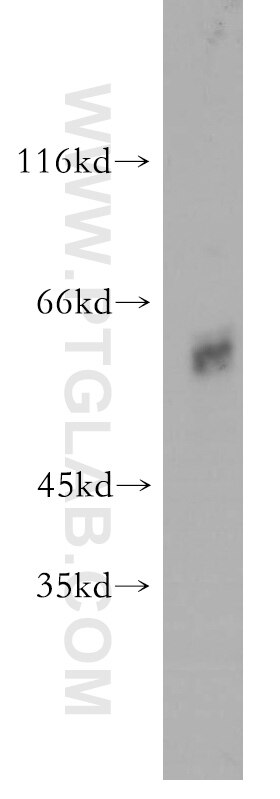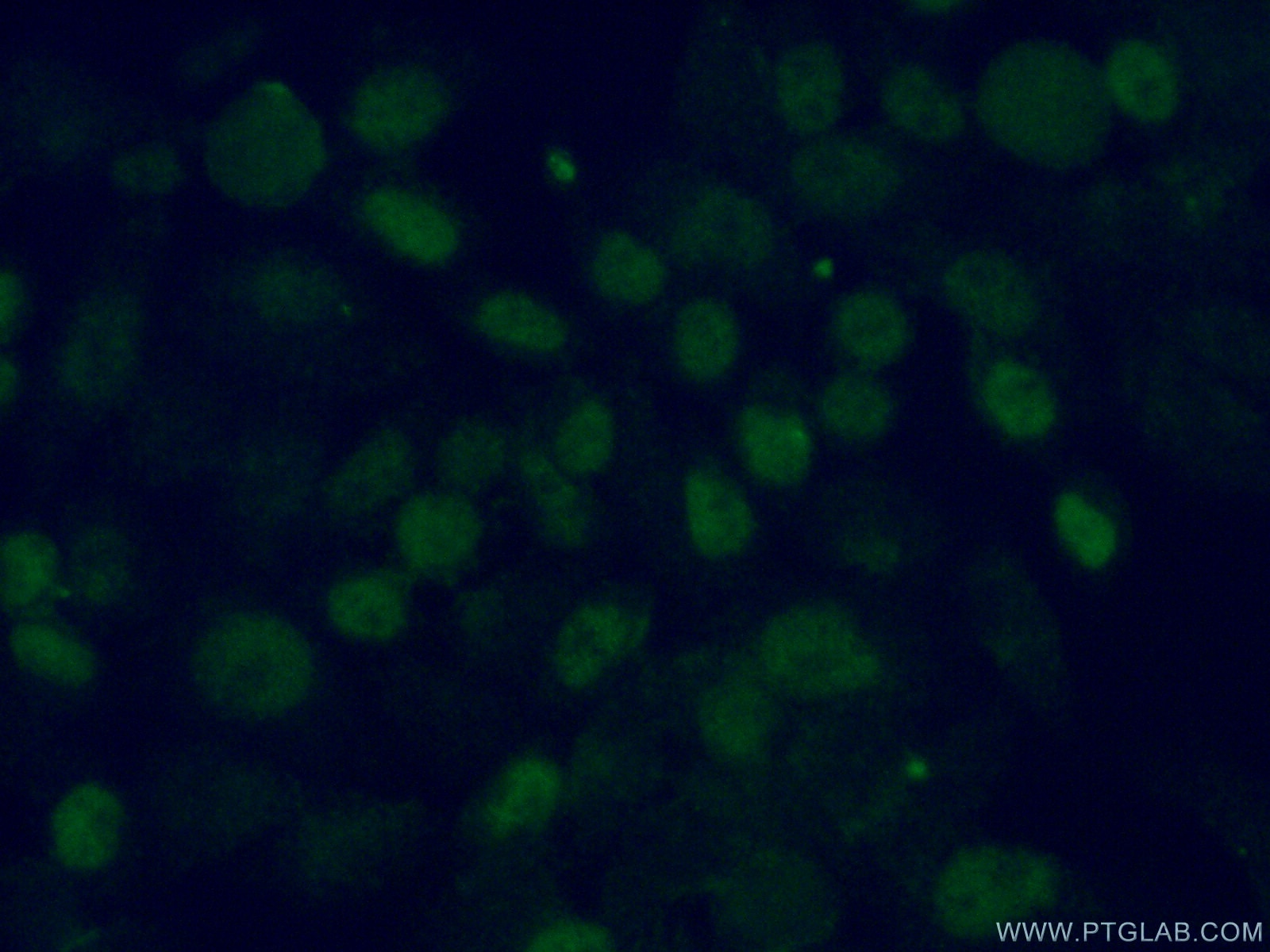- Phare
- Validé par KD/KO
Anticorps Polyclonal de lapin anti-TDG
TDG Polyclonal Antibody for WB, IF/ICC, IP, ELISA
Hôte / Isotype
Lapin / IgG
Réactivité testée
Humain, rat, souris
Applications
WB, IHC, IF/ICC, IP, ChIP, ELISA
Conjugaison
Non conjugué
N° de cat : 13370-1-AP
Synonymes
Galerie de données de validation
Applications testées
| Résultats positifs en WB | cellules Caco-2, cellules HEK-293, cellules HeLa, cellules Jurkat, cellules K-562, cellules MCF-7, cellules Raji, tissu cérébral humain, tissu de côlon de souris, tissu de thymus de souris |
| Résultats positifs en IP | cellules U-937 |
| Résultats positifs en IF/ICC | cellules HeLa |
Dilution recommandée
| Application | Dilution |
|---|---|
| Western Blot (WB) | WB : 1:2000-1:10000 |
| Immunoprécipitation (IP) | IP : 0.5-4.0 ug for 1.0-3.0 mg of total protein lysate |
| Immunofluorescence (IF)/ICC | IF/ICC : 1:50-1:500 |
| It is recommended that this reagent should be titrated in each testing system to obtain optimal results. | |
| Sample-dependent, check data in validation data gallery | |
Applications publiées
| KD/KO | See 2 publications below |
| WB | See 7 publications below |
| IHC | See 3 publications below |
| IP | See 1 publications below |
| ChIP | See 2 publications below |
Informations sur le produit
13370-1-AP cible TDG dans les applications de WB, IHC, IF/ICC, IP, ChIP, ELISA et montre une réactivité avec des échantillons Humain, rat, souris
| Réactivité | Humain, rat, souris |
| Réactivité citée | Humain, souris |
| Hôte / Isotype | Lapin / IgG |
| Clonalité | Polyclonal |
| Type | Anticorps |
| Immunogène | TDG Protéine recombinante Ag4190 |
| Nom complet | thymine-DNA glycosylase |
| Masse moléculaire calculée | 410 aa, 46 kDa |
| Poids moléculaire observé | 55-60 kDa |
| Numéro d’acquisition GenBank | BC037557 |
| Symbole du gène | TDG |
| Identification du gène (NCBI) | 6996 |
| Conjugaison | Non conjugué |
| Forme | Liquide |
| Méthode de purification | Purification par affinité contre l'antigène |
| Tampon de stockage | PBS with 0.02% sodium azide and 50% glycerol |
| Conditions de stockage | Stocker à -20°C. Stable pendant un an après l'expédition. L'aliquotage n'est pas nécessaire pour le stockage à -20oC Les 20ul contiennent 0,1% de BSA. |
Informations générales
TDG belongs to the TDG/mug DNA glycosylase family. TDG corrects G/T mispairs to G/C pairs. It is capable of hydrolyzing the carbon-nitrogen bond between the sugar-phosphate backbone of the DNA and a mispaired thymine. In addition to the G/T, it can remove thymine also from C/T and T/T mispairs in the order G/T >> C/T > T/T. It has no detectable activity on apyrimidinic sites and does not catalyze the removal of thymine from A/T pairs or from single-stranded DNA. It can also remove uracil and 5-bromouracil from mispairs with guanine. RNF4 interacts with and requires the base excision repair enzymes TDG and APE1 for active demethylation (PMID:20696907). TDG is modified by SUMO-1 and SUMO-2/3.The molecular weight of non-modified TDG is 46 kDa and modified TDG is 55-60 kDa.
Protocole
| Product Specific Protocols | |
|---|---|
| WB protocol for TDG antibody 13370-1-AP | Download protocol |
| IF protocol for TDG antibody 13370-1-AP | Download protocol |
| IP protocol for TDG antibody 13370-1-AP | Download protocol |
| Standard Protocols | |
|---|---|
| Click here to view our Standard Protocols |
Publications
| Species | Application | Title |
|---|---|---|
J Cell Biol Oxidative stress-induced assembly of PML nuclear bodies controls sumoylation of partner proteins. | ||
Proc Natl Acad Sci U S A Identification of RING finger protein 4 (RNF4) as a modulator of DNA demethylation through a functional genomics screen.
| ||
Int J Biol Sci TDG suppresses the migration and invasion of human colon cancer cells via the DNMT3A/TIMP2 axis. | ||
J Biol Chem Thymine DNA Glycosylase is a Positive Regulator of Wnt Signaling in Colorectal Cancer. | ||
J Biol Chem CRL4Cdt2 E3 Ubiquitin Ligase and PCNA Cooperate to Degrade Thymine DNA Glycosylase in S-phase. | ||
Cell Death Dis The HOTAIRM1/miR-107/TDG axis regulates papillary thyroid cancer cell proliferation and invasion. |










